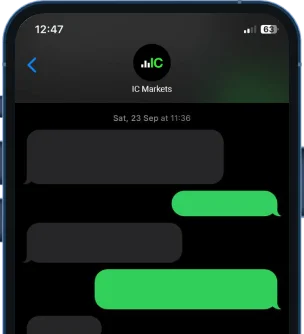How to spot common trading scams and ways to keep your information safe?
Scams are intricately designed to deceive, and each day, scammers devise new methods to gain access to your personal information for their financial gain. Below are the most common ways that scammers may deceive you:
Scammers send deceptive emails that appear to be from reputable CFD brokers such Pro Invests or financial institutions, urging recipients to click on malicious links or provide sensitive financial information.
They create fraudulent CFD trading platforms that closely mimic legitimate ones, tricking traders into depositing funds or sharing personal and financial information.
Scammers may promise unrealistic returns on CFD investments, luring traders with the prospect of high profits and minimal risk.
Scammers may impersonate Pro Invests or other well-known CFD providers, using similar logos and branding to deceive potential traders.
Some scammers pose as unregistered brokers, operating without the necessary licenses or regulatory approvals, and attract traders with enticing offers.
They use social media platforms to promote fake CFD trading opportunities, often targeting inexperienced traders with promises of quick riches.
Scammers may employ high-pressure sales tactics, encouraging traders to make quick decisions or deposits without proper research.
They provide false or misleading information about CFD products, making them appear less risky or more lucrative than they are.
Some scams involve unregistered or unregulated CFD products, making it difficult for traders to seek recourse in case of issues.
Scammers promote fraudulent investment clubs or groups, asking traders to pool their money into a collective fund, which they later abscond with.
Confirm that the Pro Invests trading platform is legitimate and registered. Also, do not forget to check the Business Registration Number and License numbers. You will find all of this information on the footer of the Pro Invests website.
To learn more about 2FA and protecting your online account, please visit to the Protect your Account page.
Only use your secure client area for all transactions, like withdrawals, transfers, and deposits.
Always pause and think twice before clicking on any email attachments or links. Do not forget to verify the sender’s details to ensure authenticity.
Stay informed about CFD trading, market dynamics, and common trading strategies. Education is a crucial defense against fraud and scams.
Be wary of unsolicited emails, phone calls, or social media messages offering CFD trading opportunities. Scammers often use these channels to reach potential victims.
Be wary of unsolicited emails, phone calls, or social media messages offering CFD trading opportunities. Scammers often use these channels to reach potential victims.
If you suspect that you have fallen victim to an investment scam or if you have any inquiries, please do not hesitate to reach out to us at: [email protected]
We are dedicated to conducting thorough investigations and taking all essential measures to stop and prevent scammers from impersonating Pro Invests, and its employees and misusing our logo to deceive individuals genuinely interested in our products and services.

Register for a Live or
Demo trading profile.
Handpick your account,
fund with local options.
Get trading using cutting-
edge platforms.
Pro Invests Global mission is to create the best trading experience for retail and institutional clients alike, allowing traders to focus more on their trading. Built by traders for traders Pro Invests is dedicated to offering superior spreads, execution and service.
Risk Warning: Trading Forex and CFDs carries a high level of risk to your capital and you should only trade with money you can afford to lose. Trading Forex and CFDs may not be suitable for all investors, so please ensure that you fully understand the risks involved and seek independent advice if necessary. Please read and ensure you fully understand our Risk Disclosure.
You must be 18 years old, or of legal age as determined in your country. Upon registering an account with Millz ltd, you acknowledge that you are registering at your own free will, without solicitation on behalf of Millz ltd.
Millz ltd does not direct its website and services to any individual in any country in which the use of its website and services are prohibited by local laws or regulations. When accessing this website from a country in which its use may or may not be prohibited, it is the user’s responsibility to ensure that any use of the website or services adheres to local laws or regulations. Millz ltd does not affirm that the information on its website is suitable for all jurisdictions.
© 2024 Pro Invests Ltd | All rights reserved.